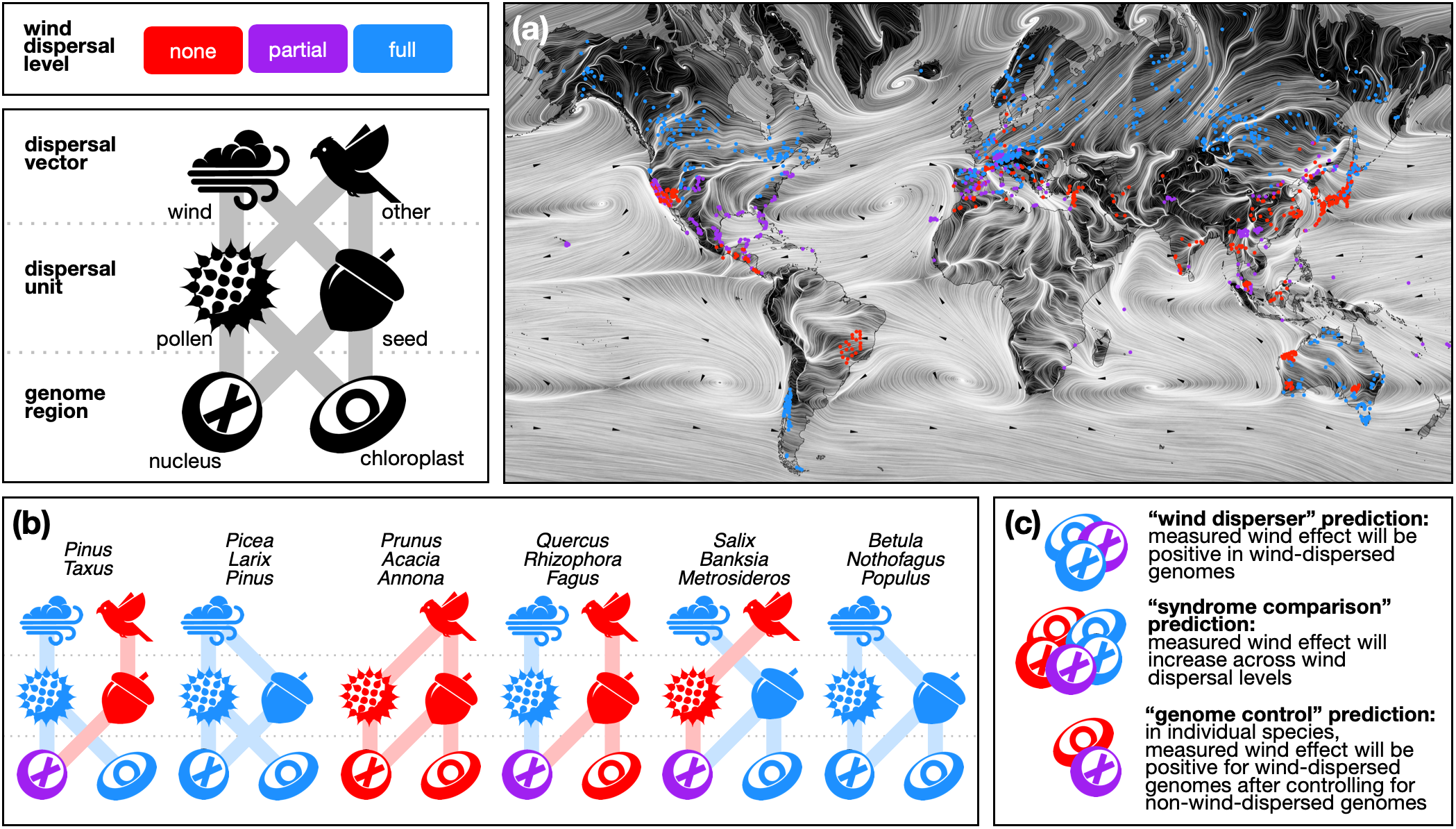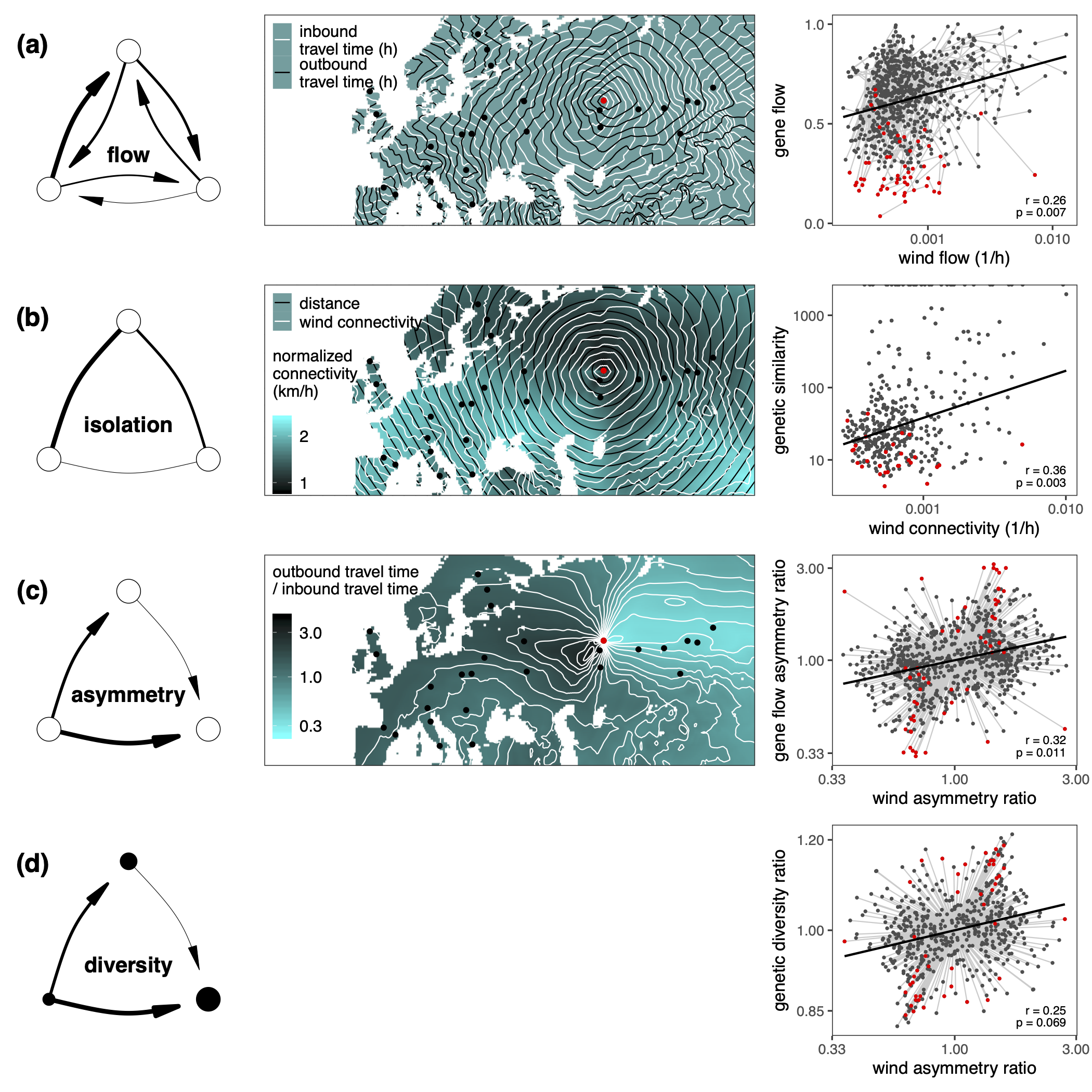Genetic isolation by wind
[PUBLICATION] Global wind patterns shape genetic differentiation, asymmetric gene flow, and genetic diversity in trees

Overview
This research, published in Proceedings of the National Academy of Sciences (2021), presents the first demonstration that global wind patterns shape large-scale genetic structures across the world’s forests. The study reveals that this relationship has multiple facets: wind speeds influence genetic differentiation, while wind directionality shapes both directional gene flow and genetic diversity.
Research Highlights
Using landscape genetic data from nearly 100 tree species integrated with decades of hourly wind data, we:
- Developed a geospatial wind connectivity modeling framework
- Created a novel hierarchical Mantel test methodology
- Demonstrated that wind-mediated gene flow creates consistent patterns in genetic differentiation globally
- Identified specific vulnerability and resilience patterns relevant to climate change and habitat fragmentation
Implications
Beyond advancing our understanding of landscape genetics and spatial ecology, this research has significant implications for biodiversity management under global environmental change. The wind patterns that facilitate or hinder gene flow suggest varying levels of adaptive capacity across different forest ecosystems, information that can inform conservation prioritization and climate adaptation strategies.
Resources

Citation: Kling, M.M., & Ackerly, D.D. (2021). Global wind patterns shape genetic differentiation, asymmetric gene flow, and genetic diversity in trees. Proceedings of the National Academy of Sciences, 118(17). https://doi.org/10.1073/pnas.2017317118